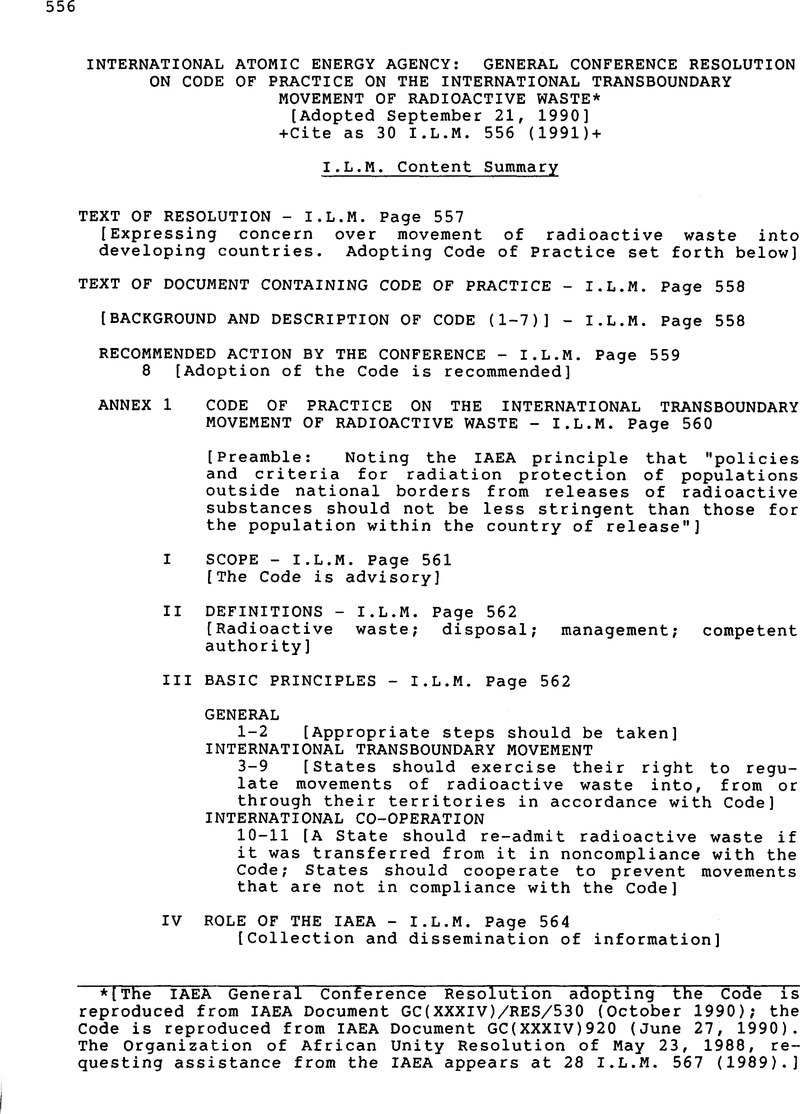Article contents
International Atomic Energy Agency: General Conference Resolution on Code of Practice on the International Transboundary Movement of Radioactive Waste
Published online by Cambridge University Press: 27 February 2017
Abstract

- Type
- Other Documents
- Information
- Copyright
- Copyright © American Society of International Law 1991
References
* [The IAEA General Conference Resolution adopting the Code is reproduced from IAEA Document GC(XXXIV)/RES/530 (October 1990); the Code is reproduced from IAEA Document GC(XXXIV)920 (June 27, 1990). The Organization of African Unity Resolution of May 23, 1988, requesting assistance from the IAEA appears at 28 I.L.M. 567 (1989).]
1/ See Annex 2 to this document.
2/ See Annex 1 to this document.
3/ These summary records will be issued as an Addendum to the present document.
* Group of Experts established pursuant to General Conference resolution GC(XXXII)/RES/490, “Dumping of Nuclear Wastes”.
1/ Safety Principles and Technical Criteria for the Underground Disposal of High-level Radioactive Wastes, Safety Series 99, 1989.
* The Group of Experts held two meetings: 22-25 May 1989 and 5-9 February 1990. This Code of Practice was adopted by the Group on 9 February 1990.
2/ Nothing in this Code prejudices or affects in any way the exercise by ships and aircraft of all States of maritime and air navigation rights and freedoms under customary international law, as reflected in the 1982 United Nations Convention on the Law of the Sea, and under other relevant international legal instruments.
3/ “Exempt quantities”, in relation to radioactive waste, are levels of radionuclide concentration, surface contamination, radiation and/or total activity below which the competent authority decides to exempt from regulatory requirements because the individual and collective effective dose equivalents received from them are so low that such levels are not significant for purposes of radiation protection. Such exempt quantities should be agreed by the competent authorities in the countries concerned with the international transboundary radioactive waste movement.
4/ Spent fuel which is not intended for disposal is not considered to be radioactive waste.
5/ The above would not apply to waste which is associated with, or results from, a service provided by the sending State to the receiving State and which is subject to a contractual arrangement between them that such waste be returned to the receiving State.
- 1
- Cited by




